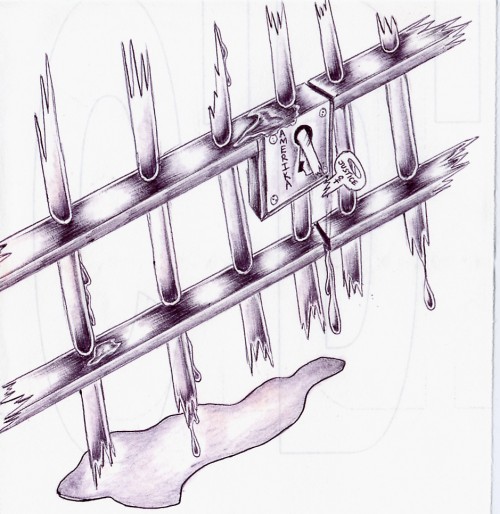I cannot offer any comments about this. Simply stunning…
A Texas mother is outraged after her son was accused of using marijuana by high school officials.
Their only evidence: The boy’s bloodshot eyes, two days after the death of his father.
Kyler Robertson, a junior at Byron Nelson High School, was suspended for three days and transferred to an alternative school until January.
His father, Richard Robertson of Fort Worth, was stabbed to death near Azle on Sunday after getting into an argument with another man, police said.
Kyler lives with his mother, Cristy Fritz, who has not been together with Robertson for a number of years.
On Tuesday, Kyler’s mother said her son was still grieving but longed for a sense of normalcy and wanted to be around friends.
“He insisted on going to school and said he just wanted everything to be, you know, normal,” Fritz said.
She said she supported his decision.
He showed up to school a little late and went to the office because he was tardy, where he was quickly accused of smoking marijuana, she said.
An assistant principal then called her.
“I think I dropped to my knees at that moment,” Fritz said.
Byron Nelson High School is part of the Northwest School District.
Lesley Weaver, a district spokeswoman, said she could not discuss Robertson’s case because of privacy laws.
In general, she said, students are not suspended without “multiple indicators” of drug use.
His mother showed NBC the district’s paperwork detailing the case against him.
An office worker claimed to smell marijuana on him, the documents said.
The school nurse reported his eyes were bloodshot, he appeared “jittery,” and his blood pressure was elevated.
The nurse also noted that his behavior and mental state were “normal.”
The district did not find any marijuana, and nobody claimed to see him smoking.
His mother said the district’s “evidence” proved nothing.
Her son suffers from allergies and was still emotional from his father’s death, she said.
“I said, ‘This is all you’re giving me?'” Fritz said. “In the blink of an eye, my son’s whole high school career was going down the tubes. And he’s dealing not just with a loss but a horrific event.”
She said administrators ignored her repeated pleas to reconsider the suspension and that they were mistaking his grief for drug use.
His mother described her son as an A and B student.
He plays on the junior varsity golf team.
After the assistant principal called her, Fritz said she picked her son up and took him straight to his doctor, who gave him a urine test.
A lab report showed he was clean — not just for marijuana, but for a number of drugs.
“I know my son, and I know he’s not using drugs, and I told them that,” Fritz said.
When she returned to school with the proof, she said administrators agreed to shorten the
suspension and withdraw the transfer, but they never apologized.
“No condolences, no sympathies, no apologies for the lack of compassion, the way they mishandled him, the false allegations, nothing,” she said.
Fritz said she wants the district to admit its mistake and to remove any mention of the suspension from his file.
NBC
A high school principal has apologized to a teen suspended after he came to school with red, watery eyes.
Kyler Robertson’s father had been fatally stabbed two days earlier, and his mother told the Fort Worth Star-Telegram that she e-mailed teachers about the death.
But Tuesday, when Kyler arrived at Byron Nelson High School, officials said he smelled of marijuana, along with having the other symptoms. He was suspended three days and assigned to an alternative school.
Wednesday, a urine test showing no evidence of drugs, and administrators canceled the alternative education placement. The suspension was lifted the next day.
Principal Linda Parker apologized on Friday.
A 53-year-old man faces a murder charge in Richard Robertson’s death.




